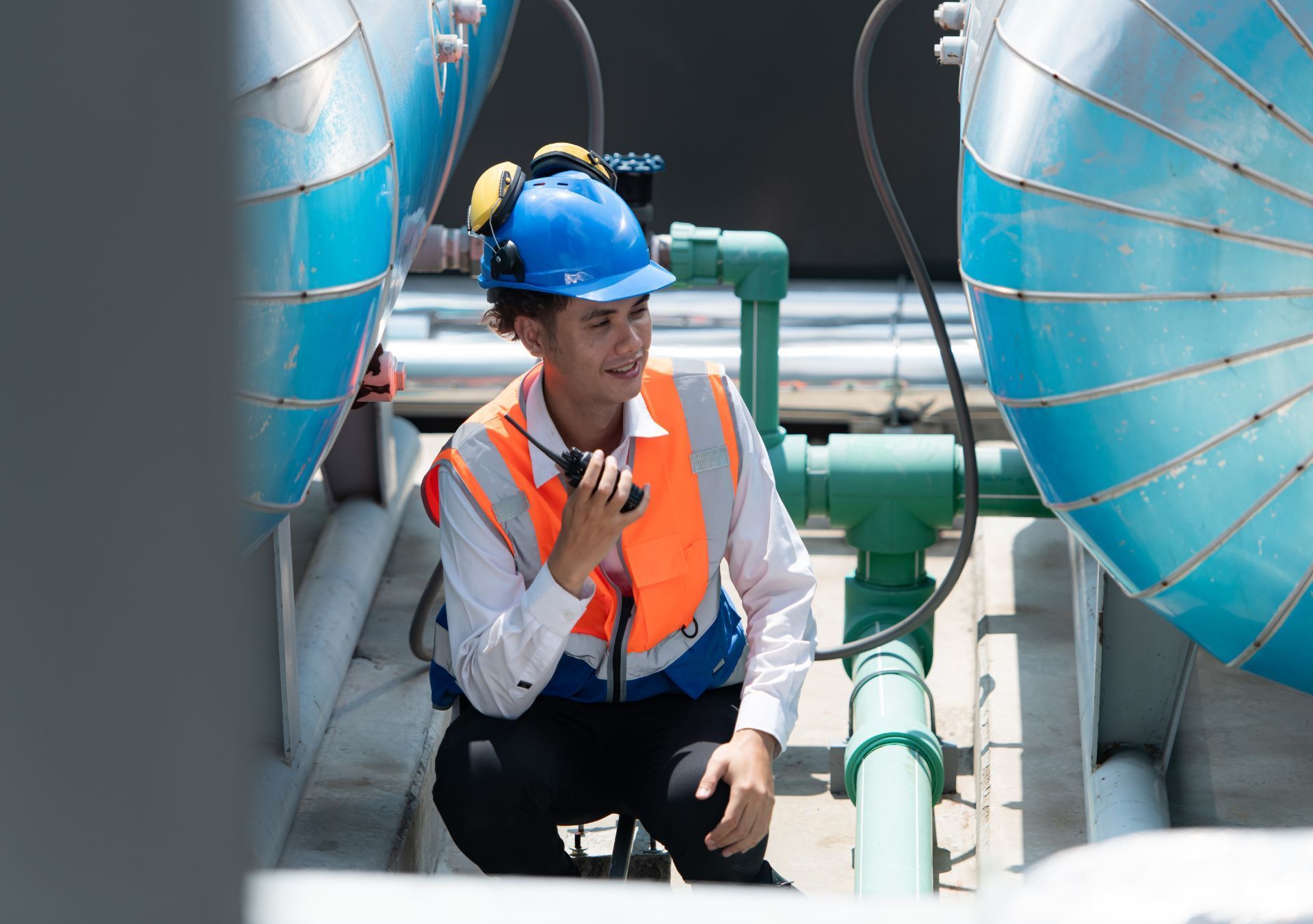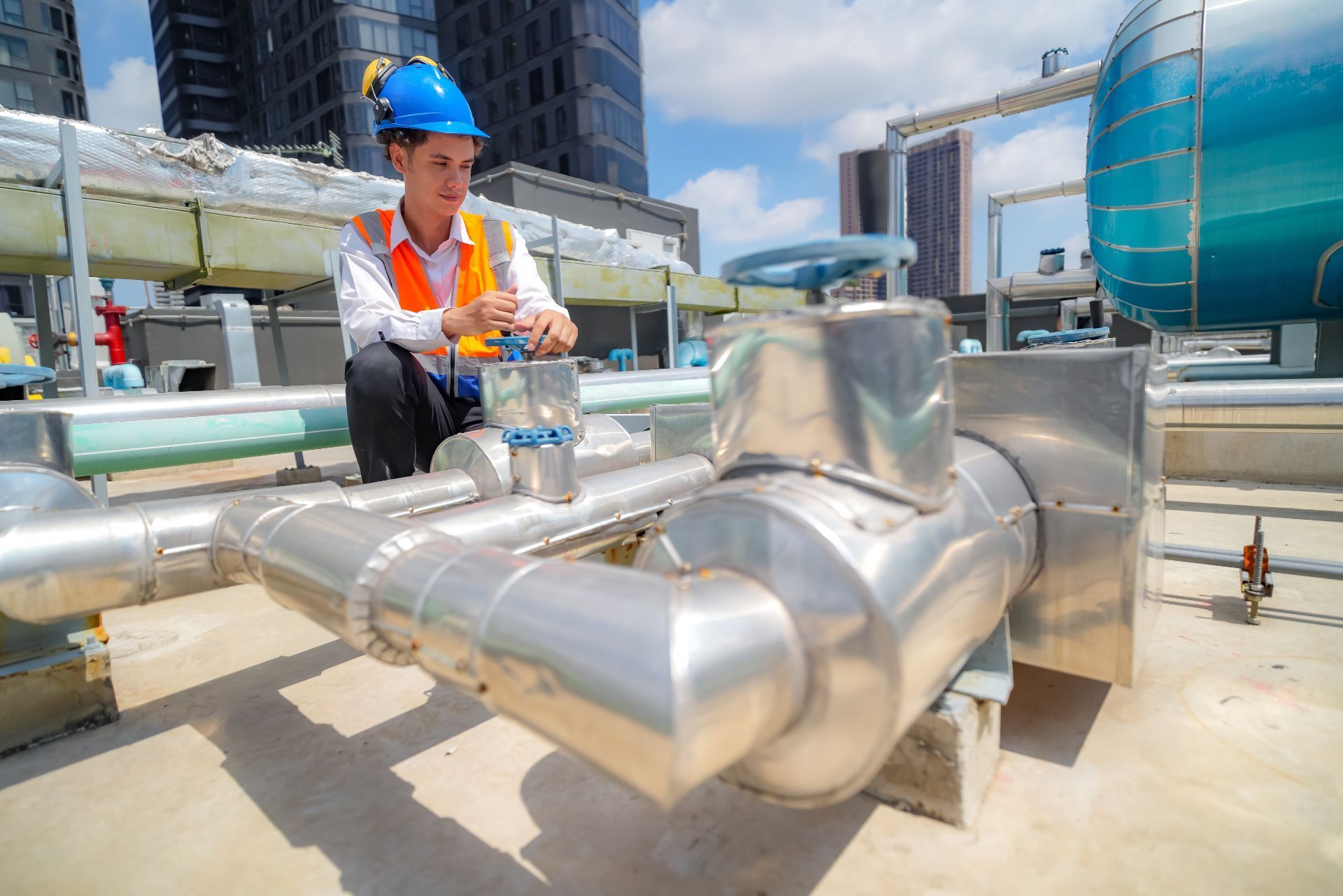Arizona Chiller Technician Insurance
See How We're Different:
or Call Us:(480) 526-3222

Most Common Business Policies
Index
Contact Us
Working as a chiller technician in Arizona presents unique challenges, from managing complex refrigeration systems to navigating the state’s harsh climate. With the rise in workplace injuries and increasing insurance costs, understanding the nuances of insurance coverage is crucial for professionals in this field. This comprehensive guide explores everything chiller technicians in Arizona need to know about insurance—from workplace safety risks to the latest trends in commercial insurance and regulatory requirements.
Arizona reported 55,900 nonfatal workplace injuries and illnesses in private industry in 2023, with an incidence rate matching the national average of 2.4 per 100 full-time equivalent workers. This statistic highlights the importance of adequate insurance coverage for those in physically demanding roles like chiller technicians. For more detailed workplace injury data, visit the
Bureau of Labor Statistics Arizona report.
Understanding the Risks for Chiller Technicians in Arizona
Chiller technicians face a variety of occupational hazards, including exposure to refrigerants, electrical components, and heavy machinery. Additionally, the extreme heat in Arizona adds another layer of risk, increasing the likelihood of heat-related illnesses and accidents on the job.
Dr. Siyun Song, an assistant professor at the University of Alabama, stresses the need for standardized heat safety protocols, stating, “We need a real standard when it comes to heat.” This is particularly relevant in Arizona, where rising temperatures and outdoor work environments put technicians at greater risk. Implementing proper heat safety measures not only protects workers but also reduces insurance claims related to heat stress and injuries. Learn more about heat-related risks in Arizona’s workforce from this expert insight.
Common Workplace Injuries for Chiller Technicians
Injuries such as cuts, burns, electrical shocks, and musculoskeletal disorders are common among chiller technicians. These injuries often result from handling heavy equipment, working in confined spaces, or exposure to hazardous substances. The physical demands of the job, combined with environmental factors, make comprehensive insurance coverage essential. Moreover, the repetitive nature of certain tasks, such as lifting and maneuvering bulky machinery, can lead to chronic pain and long-term health issues if not properly managed through ergonomic practices and regular breaks.
Heat-Related Illnesses and Their Impact
Arizona’s intense heat can lead to dehydration, heat exhaustion, and heat stroke, which not only jeopardize health but also increase downtime and medical costs. Proper training and insurance policies that cover heat-related conditions are vital for both employers and technicians. Furthermore, the psychological effects of working in extreme temperatures can also take a toll, leading to decreased morale and productivity. Employers are encouraged to foster a culture of safety by providing hydration stations, regular breaks in shaded areas, and education on recognizing the early signs of heat-related illnesses. Such measures not only safeguard the well-being of technicians but also contribute to a more efficient and motivated workforce.

Types of Insurance Coverage for Chiller Technicians
Chiller technicians require a mix of insurance policies to protect themselves and their businesses. Understanding these options helps ensure adequate protection against workplace risks and financial losses.
General Liability Insurance
This insurance covers third-party claims for bodily injury or property damage caused by the technician’s work. For example, if a chiller technician accidentally damages a client’s property, general liability insurance would cover repair costs and legal fees. Additionally, this type of insurance can also protect against claims arising from advertising injuries, such as copyright infringement or slander, which can be particularly relevant for technicians who market their services through various channels.
Workers’ Compensation Insurance
Given the high incidence of workplace injuries in Arizona, workers’ compensation insurance is mandatory for most employers. It provides medical benefits and wage replacement for employees injured on the job. With Arizona’s 55,900 reported workplace injuries in 2023, this coverage is critical for chiller technicians. Furthermore, workers' compensation can also offer rehabilitation services, helping injured workers return to their jobs more quickly, which is essential in maintaining a skilled workforce in a field that requires specialized training and expertise.
Commercial Auto Insurance
Many chiller technicians use vehicles to transport tools and equipment. In Arizona, auto insurance premiums have surged by 20.6% in 2024, marking the largest increase in nearly 50 years. This spike underscores the importance of securing adequate commercial auto insurance to cover accidents and liabilities on the road. More details on this trend can be found in the Arizona Group’s analysis of automotive rates. Additionally, commercial auto insurance can cover damages to the technician's vehicle and equipment in the event of theft or vandalism, which is a growing concern in urban areas where chiller technicians often work.
Professional Liability Insurance
Also known as errors and omissions insurance, this coverage protects chiller technicians against claims of negligence or mistakes in their professional services. It is especially important for those offering consulting or design services related to HVAC systems. In a field where precision and expertise are paramount, having this insurance can safeguard technicians from the financial repercussions of an unhappy client who claims that their system design led to inefficiencies or failures. Moreover, as technology evolves, the complexity of HVAC systems increases, making professional liability insurance an essential part of a technician's risk management strategy, ensuring they can focus on delivering high-quality service without the looming threat of litigation.
The Economic Impact and Industry Trends Affecting Insurance
The health care sector in Arizona employs over 400,000 individuals and contributes $78 billion to the state’s GDP. While this sector is distinct from HVAC and chiller services, the economic environment influences insurance markets and healthcare costs that impact workers’ compensation and liability claims indirectly. The interconnectedness of these industries means that fluctuations in healthcare costs can ripple through the economy, affecting everything from payroll to operational budgets, ultimately influencing the insurance landscape.
Arizona’s insurance industry is undergoing significant digital transformation, with insurers adopting data analytics and IoT devices to improve efficiency and customer experience. This trend benefits chiller technicians by enabling more personalized insurance products and streamlined claims processing. The integration of technology not only allows for real-time monitoring of equipment but also facilitates proactive maintenance, which can reduce the likelihood of claims. Learn more about these innovations in the Integrity Insurance Group’s blog on commercial insurance trends.
Market Growth in Insurance Claims Adjusting
The Third-Party Administrators & Insurance Claims Adjusters industry in Arizona is projected to reach a market size of $54 billion by 2025. This growth reflects increased demand for efficient claims management, which can benefit chiller technicians by reducing claim processing times and improving dispute resolution. As the industry evolves, there is a growing emphasis on training and technology adoption among claims adjusters, ensuring they are equipped to handle complex claims more effectively. This not only enhances the customer experience but also fosters a more competitive market for insurance services.
Rising Insurance Premiums and Their Effects
Insurance premiums in Arizona have been rising sharply, with homeowner premiums increasing substantially since 2019. J.D. Hayworth, writing for the Arizona Capitol Times, highlights the challenges this trend poses for residents and businesses alike. For chiller technicians, rising premiums mean higher costs for liability, workers’ compensation, and auto insurance, making it essential to shop around and consider risk management strategies. The increase in premiums can also be attributed to a variety of factors, including natural disasters, increased litigation, and the overall economic climate. Read more about these insurance cost trends in the Arizona Capitol Times.
Moreover, the implications of rising premiums extend beyond just financial strain; they can also affect the availability of coverage. Insurers may become more selective in underwriting policies, leading to potential gaps in coverage for certain high-risk professions, including chiller technicians. This scenario underscores the importance of understanding the nuances of insurance policies and the need for professionals in the industry to advocate for fair and reasonable terms that reflect their unique risks. As the market continues to evolve, staying informed about these trends will be crucial for maintaining competitive advantage and ensuring adequate protection.

Regulatory Landscape and Compliance for Insurance in Arizona
The Arizona Department of Insurance and Financial Institutions (DIFI) plays a key role in regulating insurance companies operating in the state. Their examinations include reviews of financial reports and compliance with state laws, ensuring that insurers remain solvent and fair in their practices. This regulatory framework is crucial not only for the stability of the insurance market but also for maintaining consumer confidence. By enforcing stringent guidelines, DIFI helps to ensure that policyholders are treated fairly and that their claims are processed in a timely manner.
For chiller technicians and their employers, understanding these regulatory frameworks is important when selecting insurance providers and policies. DIFI’s oversight helps maintain market stability and protects policyholders from unfair practices. Additionally, the department provides resources and guidance on navigating the complexities of insurance regulations, which can be particularly beneficial for small businesses that may lack in-house legal expertise. More information about DIFI’s examination program is available on their official site here.
Ensuring Compliance with Workers’ Compensation Requirements
Arizona law mandates workers’ compensation insurance for most employers, and failure to comply can result in severe penalties. Chiller technicians should verify that their employers carry proper coverage to protect against workplace injury claims. This is particularly important in the HVAC industry, where technicians often work in hazardous environments and may be exposed to various risks. Employers who prioritize safety and compliance not only protect their employees but also foster a culture of accountability and care, which can enhance employee morale and retention.
Choosing the Right Insurance Provider
When selecting insurance, technicians should consider providers with strong financial ratings and a reputation for responsive claims handling. Regulatory oversight by DIFI offers an additional layer of assurance regarding insurer reliability. It's also advisable to seek out insurers that specialize in coverage for the HVAC industry, as they will have a better understanding of the unique risks and needs associated with this line of work. Furthermore, technicians should look for policies that offer comprehensive coverage options, including liability, property damage, and equipment breakdown, to ensure that they are fully protected against potential losses.
Tips for Chiller Technicians to Manage Insurance Costs
With insurance premiums rising, managing costs without sacrificing coverage quality is a priority for many chiller technicians. Here are some practical tips:
Implement Safety Programs
Reducing workplace injuries through comprehensive safety training can lower workers’ compensation premiums. Emphasizing heat safety and proper equipment handling is particularly effective in Arizona’s climate. Additionally, fostering a culture of safety can lead to fewer incidents, which not only helps in reducing costs but also boosts employee morale and productivity. Regularly scheduled safety drills and workshops can keep safety protocols fresh in the minds of technicians, ensuring that safety becomes second nature in their daily operations.
Bundle Insurance Policies
Many insurers offer discounts when multiple policies—such as general liability and commercial auto—are bundled together. This approach can yield significant savings. Moreover, bundling can simplify administrative tasks, as managing fewer policies often leads to less paperwork and easier tracking of coverage. Technicians should also inquire about any additional discounts available for long-term customers or for maintaining a claims-free record, as these can further enhance savings.
Leverage Technology
Utilizing digital tools and IoT devices for risk monitoring can improve safety outcomes and provide insurers with data to justify lower premiums. This aligns with broader industry trends toward digital transformation. For instance, real-time monitoring systems can alert technicians to potential equipment failures before they escalate, thus minimizing downtime and repair costs. Moreover, data analytics can help identify patterns in incidents, allowing for targeted interventions that enhance overall workplace safety and efficiency.
Shop Around and Review Annually
Insurance markets fluctuate, so regularly comparing quotes and reviewing coverage ensures technicians get the best value. Working with an insurance broker familiar with Arizona’s market can provide tailored advice. It’s also beneficial to keep abreast of changes in the insurance landscape, such as new coverage options or emerging risks that could affect premiums. Engaging in discussions with peers in the industry can provide insights into which insurers are offering the best rates and services, creating a more informed approach to insurance management.
Conclusion
For chiller technicians in Arizona, navigating the insurance landscape is both complex and essential. From understanding the risks posed by workplace injuries and extreme heat to adapting to rising insurance premiums and regulatory requirements, having the right coverage protects livelihoods and businesses alike.
By staying informed about industry trends, leveraging safety programs, and choosing reputable insurers, chiller technicians can mitigate risks and manage costs effectively. The evolving insurance market in Arizona, shaped by digital innovation and regulatory oversight, offers new opportunities for tailored and efficient coverage solutions.
For those in the profession, investing time in understanding insurance options and maintaining compliance is a critical step toward a secure and sustainable career in Arizona’s challenging but rewarding environment.
